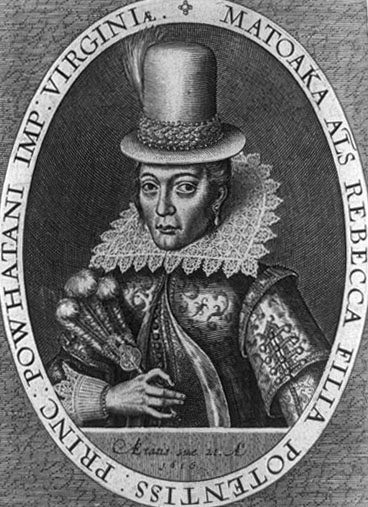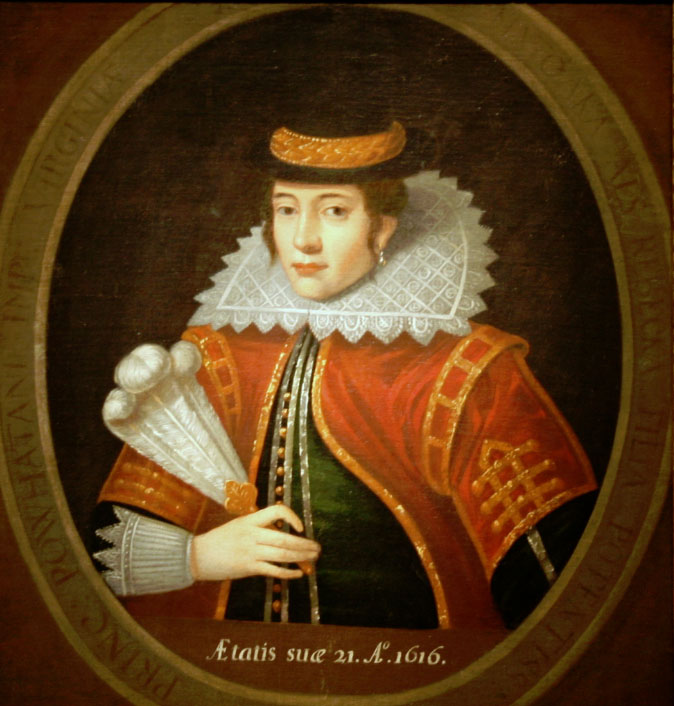Although Hamilton Wright Mabie and Kate Stephens bill the subjects of their
collective biography as “heroines every child should know,” the entry on
Pocahontas is marked by indeterminacy.
There is surprisingly little that can be known about the woman who has
secured such an eminent place in early American history. During the
nineteenth- and early twentieth-century, she consistently appeared as a
subject of biography; however, presentations of her ‘life story’ record a
few verifiable milestones (birth, religious conversion, marriage, death)
within the context of popular legends about her, repeated so often that they
have crystallized in a mythic figure. Today, historians suggest that the
narrative by which she is characterized as a heroine—her rescue of
Captain John Smith—was actually a Native American ritual or
a mock execution and deliverance, performed to foster relations with the
English settlers. It now is believed that her actions were romanticized in
Smith’s account of the episode, which was not written until much later.
Nonetheless, his crafted rendering was reproduced as fact in a long line of
tributes, which together have contributed to mythologizing her role in America’s foundation. Yet even as
what is known about her changes, our notion of 'Pocahontas' persists.
Although Hamilton Wright Mabie and Kate Stephens bill the subjects of their
collective biography as “heroines every child should know,” the entry on
Pocahontas is marked by indeterminacy.
There is surprisingly little that can be known about the woman who has
secured such an eminent place in early American history. During the
nineteenth- and early twentieth-century, she consistently appeared as a
subject of biography; however, presentations of her ‘life story’ record a
few verifiable milestones (birth, religious conversion, marriage, death)
within the context of popular legends about her, repeated so often that they
have crystallized in a mythic figure. Today, historians suggest that the
narrative by which she is characterized as a heroine—her rescue of
Captain John Smith—was actually a Native American ritual or
a mock execution and deliverance, performed to foster relations with the
English settlers. It now is believed that her actions were romanticized in
Smith’s account of the episode, which was not written until much later.
Nonetheless, his crafted rendering was reproduced as fact in a long line of
tributes, which together have contributed to mythologizing her role in America’s foundation. Yet even as
what is known about her changes, our notion of 'Pocahontas' persists.
This elusive figure is known to history by several aliases: her Indian name
Metoake, her adopted name Pocahontas,
and her Christian name Rebecca. Because
her identity is so unstable, biographers are continuously involved in a
process of making her exotic persona in the context of romance. In
1908, when Mabie and Stephens include a sketch of her life
in their collective biography (a short adaptation of Pocahontas by Elizabeth Eggleston
Seelye), they already are aware that the popular legend had begun
to be destabilized:
Men in England in her
time idealised her into a princess and fine lady. In our time historians
have been surprised and indignant at finding that she was not a heroine of
romance, but simply an Indian maiden. Such as her life made her she was—in
her manners an untrained savage. But she was also the steadfast friend and
helper of the feeble colony, and that is why her life is heroic and full of
interest. (148)
While critical of contemporary constructions, the presenters indicate that
the discrediting of popular idealizations of Pocahontas caused historians to
be upset, even “indignant.” But they leave us to wonder why knowing more
about this heroine’s true identity would generate such an intensely negative
response. Did these biographical revelations impugn the accuracy of
historical scholarship? Or was their outrage located in the suggestion that
a savage also could pass for a lady? Mabie and Stephens's record of her life
retains the perspective of many collective biographies published between
1830 and 1940 in casting Pocahontas as an
“untrained savage” or “heathen”—a language of uneasiness about her racial
and social liminality.
Pocahontas
converted to Christianity, married an Englishman and spoke his language; as
well, she was a Native American woman who had the appearance of gentility—as
she does in the image Simon de Passe engraved in
1616 (shown at the far left)
[1]. In their text, Mabie and Stephens include the “Indian maiden” as a
heroine because she facilitated England’s hold in the New World and exhibited successful assimilation
between the two cultures. They endorse those details considered to be of
“interest” in a narrative which tells us more about the presenters’
perceptions than it does about Pocahontas herself. Their biographical
characterization is distinctive as a compilation of types of womanhood
including the exotic native and the steadfast helpmate to men. Phrases like
“as she is styled in the quaint narrative” and “the romantic story”
frequently appear in the sketch of her life in
Heroines Every Child Should Know
, signaling Seelye's or Mabie and Stephens’s intention to undermine
certain legends. They provide us with a purportedly more accurate notion of
Pocahontas, although episodes in her life story clearly have been crafted
for effect.
The entry
begins not with Pocahontas, but with an extended discussion about her
father, Indian chief Powhatan. Throughout, Pocahontas's life is recorded in
the context of male authority: “Pocahontas was Powhatan's favourite
daughter. She
was born in 1594 or 1595. Of her mother nothing is
known. Powhatan had many wives; when he tired of them he would present them
to those of his subjects whom he considered the most deserving” (147).
However, the ‘othering’ of Native Americans here as morally backwards (and
later as dangerous) develops in contrast with the character of Pocahontas.
Mabie and Stephens want to reveal the real woman behind the heroine, yet
they dispel romanticized notions with reluctance—“It is a disappointment to
learn that the name which the romantic story of this Indian princess has
made so famous was not her real name”—an inclination, perhaps, to maintain a
distinction between the “barbarous” native population which colonialists had
to subdue and the young Indian woman whose assistance was critical to
preserving the Jamestown colony and facilitating England’s hold in the New
World (147). Our presenters appear to find it unsettling that these white
male explorers relied upon a female who was as “untrained,” or uncivilized,
as the rest of her tribe:
It was a barbarous life in which the little Pocahontas was bred.
Her people always washed their young babies in the river on the coldest
mornings to harden them. She
was accustomed to see her old father sitting at the door of his cabin
regarding with grim pleasure a string of his enemy's scalps, suspended
from tree to tree, and waving in the breeze. (148)
As a narrative of the heroine's childhood in nineteenth-century collective
biographies, this certainly stands out as unpromising.
The
famous story concerning the salvation of John Smith has become emblematic
for the whole colony of settlers Pocahontas preserved as “the steadfast
friend of all white men” (Mabie and Stephens 154). Mabie and
Stephens adhere to the standard version as it was presented in Smith’s
record of the event and preface the narrative in the context of Powhatan’s
ambitions. Again, they distinguish between the brutal nature of Native
American culture and the sympathetic character of Pocahontas, citing pity as
the motive for her actions:
Powhatan, sensible of the pomp and dignity proper to his
position as a great warrior, particularly desired to impress the English who
were settling at Jamestown. A member of the colony, Captain Smith had been
prisoner for several weeks and was detained until preparations had been made
to receive him in state. . . .
Captain Smith was then feasted in the "best barbarous manner,"
and a council was held to decide his fate. This debate lasted a long time,
but the conclusion could hardly have been favourable to Captain Smith, since
Powhatan was jealous of the white colony already encroaching upon his
seclusion at Werowocomoco.
During this solemn debate Captain Smith must have felt anything
but comfortable. He did not know his doom until two stones were brought in
and placed before Powhatan. Then as many as could lay hands on him dragged
him to the feet of the chief and laid his head upon the stones. The
executioners raised their clubs to beat out his brains. Such a scene was not
uncommon in this forest court. From childhood these savage men and women
were accustomed to exult in the most barbarous tortures and executions.
It is then the more wonderful that the heart of a
little Indian maiden should have been touched with pity for the doomed white
man. Pocahontas, a child of ten or twelve, and "the
king's dearest daughter," pleaded for the life of the captive. But "no
entreaty could prevail" with the stern Powhatan.
The warriors were ready to strike the blow, when the child flew
to the side of Captain Smith, took "his head in her arms and laid her own
upon his to save him from death, whereat," says the narrative "the Emperor
[Powhatan] was contented he should live to make him hatchets and her beads
and copper," thinking he was accustomed to follow all occupations. "For,"
says the story, "the king himself will make his own robes, shoes, bows,
arrows, and pots," while he would "plant, hunt, or do anything so well as
the rest."
Powhatan did not long detain Captain Smith for such trivial uses
as making trinkets for Pocahontas. It had become the desire of his heart to
possess the powerful weapons and tools of the English. He saw that a friend
in Jamestown would be a good thing, and he perhaps hoped from friendly
commerce with the colony to acquire ascendancy over other Indian tribes.
(148-50)
The detail about Smith being made to produce decorative objects for
Pocahontas and her father—what in Victorian England would have been considered an occupation for
workers or females—does not appear in most collective biographies of the
period. A narrative about the Anglicization of an Indian woman undergirds her legend as a
heroine as well as the sketch of her life in our featured text; however,
Mabie and Stephens also tell us of a mutual attempt by the Native Americans
to assimilate a white man into their culture.
Repeatedly, Mabie and Stephens represent Pocahontas as an intercessor, even a
pawn, between Powhatan and Smith, between the Indian tribes and the English,
both in the New World and abroad. When hostilities led to the detainment of
prisoners on either side, “Pocahontas presently came to Jamestown,
accompanied by Indian messengers. Her father had sent them with presents,
and a message excusing ‘the injuries done by some rash, untoward captains, his subjects,
desiring their liberties for this time with the assurance of his love
forever’” (153). Yet in the following passage (another famous
episode in biographical tributes), our presenters reveal the contradiction
between the real Pocahontas and the stylized figure of “the quaint
narrative.” The real woman took agency for herself and risked her own life
by acting in subversion of male authority—radical behavior for her sex by
the standards of either Native American culture or the late-Victorian
readers’ notions of gender codes:
Powhatan was gathering his forces and planning the
certain destruction of his visitors. The English were alone in the Indian
cabins. Suddenly Pocahontas, Powhatan's "dearest jewel and daughter," as she
is styled in the quaint narrative, appeared before Captain Smith. She had
come this dark night through the "irksome woods" alone from her father's
cabin.
"Captain Smith," said
she, "great cheer will be sent you by and by; but Powhatan and all the
power he can make will after come and kill you all, if they that bring
you the cheer do not kill you with your own weapons when you are at
supper. Therefore, if you would live, I wish you presently to be
gone."
Captain Smith wished to give Pocahontas presents of those
trifles dear to the heart of an Indian, and such as Pocahontas most
delighted in.
"I dare not," said the
girl, with tears running down her cheeks, "be seen to
have any, for if Powhatan should know it, I am but dead."
She then ran away into the woods as she had come. Within less
than an hour, eight or ten savages came, bringing great platters of venison
and other food. They begged the Englishmen to put out the matches of their
guns, for the "smoke made them sick," and to sit down to eat. But the
Captain was vigilant. . . . (160-1)
Here, Mabie and Stephens’s reference to Pocahontas as her father’s “dearest
jewel” ironically accentuates her value as an asset to his adversaries. In a
letter Smith later wrote to Queen Anne, his endearing account
of Pocahontas’s heroics defines her resolve as a form of angelic
ministry:
“When inconstant
fortune turned our peace to war, this tender virgin would still not
spare to dare to visit us, and by her our jars have been oft appeased,
and our wants still supplied.” [2] Yet
our presenters’ skepticism complicates her characterization in the
old-fashioned romance, leaving us desirous to know more about the real
individual who had determined upon this intrepid mission to preserve the
settlers.
In the endeavor to better know Pocahontas, Mabie and Stephens oddly give less
consideration than Smith did to the question of her true motive for
assisting the foreign adventurers at Jamestown. In the same letter to Queen
Anne, Smith suggests several possibilities but endorses none: “Were it the policy
of her father thus to employ her, or the ordinance of God thus to make
her his instrument, or her extraordinary affection to our nation, I know
not.” Mabie and Stephens simply postulate that the latter reason is
correct (usually adding a racial component to her affection for the English)
and are satisfied with this extraordinary unknown. Now, of course, it is
impossible to know why Pocahontas was so eager to help the colonists.
Perhaps, like her father, she was impressed by their advanced tools but
sought a less confrontational means to acquire the new technology. Or was
she in fact the devoted helpmate, moved by feminine emotion to prevent their
suffering? Then again, Smith implies that she was not submissive to the
Englishmen: “Jamestown with her wild train she as freely frequented, as her
father’s habitation.” We see self-possession in this depiction as
Pocahontas becomes an exotic queen with her native courtiers.
Years later, Pocahontas was caught up in a captivity narrative of her own
when the English Captain Argall formulated a plan to take her
hostage. According to Mabie and Stephens, “the following story is told of
the manner in which Pocahontas was betrayed” (162). Her characteristic role
as a helpmate is highlighted once again in this story, but we see it being
used to manipulate her. Mabie and Stephens contribute to an impression that
the English encountered a corruptible indigenous population:
The Indian girl manifested no desire to go aboard Captain
Argall's vessels, having many a time been on English vessels, in her
friendly relations with the whites. Captain Argall offered an old Indian
named Japazaws the irresistible bribe of a copper kettle if he
would betray Pocahontas into his power. Japazaws undertook to do this with
the assistance of his wife. This wife became immediately possessed with an
intense desire to visit the English ship, which she said had been there
three or four times and she had never been aboard it. She begged her husband
to allow her to go aboard, but Japazaws sternly refused, saying she could
not go unless she had some woman to accompany her. He at last threatened to
beat her for her persistence.
The tender heart of Pocahontas was moved with pity; she offered
to accompany the woman on board the English vessel. Japazaws and his wife
with the chief's daughter were taken on to the ship, where they were well
entertained and invited to supper. The old man and his wife were so well
pleased with their success that during the whole meal they kept treading on
Captain Argall's toes. After supper the captain sent Pocahontas to the
gun-room while he pretended to have a private conversation with Japazaws. He
presently recalled her, and told her that she must remain with him, and that
she should not again see Powhatan until she had served to bring about a
peace between her father and the English. Immediately Japazaws
and his wife set up "a howl and cry," and Pocahontas began to be
"exceedingly pensive and discontented." The old people were rowed to shore,
happy in the possession of their copper kettle and some trinkets.
(162-3)
Pocahontas remained a prisoner at Jamestown for nearly a year; however, her
captivity helped to improve relations between the English and the Native
Americans. “There can be no doubt that she was treated with the greatest
friendliness by the colonists. Her feelings had always been warm for the white
strangers. Now that she was an innocent and interesting young
prisoner among them, what more natural than that she should be honoured and
petted?” (165-6). Here, she is described as an endearing ‘other’ even as she
becomes more acclimated to life among her captors.
Mabie and Stephens include a brief illustration of Pocahontas’s appearance
at the time: “Pocahontas was now a woman, being about eighteen to nineteen
years of age. To judge from her portrait she could not have had the beauty
with which tradition has invested her, but she had at least a pleasant and
interesting face, and there must have been some charm in her large black
eyes and straight black hair” (166). Their tempered interpretation of her
countenance dispels previous notions of her as an exotic beauty, yet they
also find that those features which are particular to her Native American
heritage make her attractive. Pocahontas’s romanticized persona developed in
part from others’ response to her racial identity; as well, it is the main
category of analysis Mabie and Stephens use to discuss her relationship with
John
Rolfe—who had been sent as a representative of the colonists to
negotiate with Powhatan for his daughter’s release. Alternately, it is
implied that she is attracted to Rolfe’s cultural identity as the presenters
emphasize his Englishness:
There was one colonist at least who took a great interest in the young
prisoner. Mr. John Rolfe is styled in the different records "an honest
gentleman of good behaviour," "an honest and discreet English gentleman," "a
gentleman of approved behaviour and honest carriage". . . . And what more
natural than that the constant friend of the white men should love an
Englishman? (166)
As
Pocahontas’s relationship with Rolfe developed at Jamestown, she underwent a
process of Anglicization: “The
subject of the conversion of Pocahontas had weighed heavily upon the mind of
Mr. Rolfe. He accordingly attempted to convert her to Christianity, and in doing so fell in love with her”
(166). The religious conversion of the Indian princess altered perceptions
about her identity; it also became a racial conversion of the exotic native
to ideal English womanhood. “It was deemed necessary to give her a Christian
name at her baptism. She was christened Rebecca, and as a king's daughter she was known after this as
the Lady Rebecca, and sometimes as the
Lady Pocahontas” (166-7). With a more
genteel status, she became an acceptable bride for an English gentleman, and
Sir Thomas Dale, governor of the Virginia colony, consented
to a union between Rolfe and Pocahontas. Mabie and Stephens describe their
wedding both as a cultural assimilation and as a spectacle of the
‘other’:
In April, 1614, the odd bridal
procession moved up the little church with its wide-open windows and its
cedar pews. The bridegroom was a young Englishman, the bride an Indian
chief's daughter, accompanied by two red-skinned warriors, her brothers. Before the altar
with its canoe-like front Pocahontas repeated in imperfect English her
marriage vows, and received her wedding ring. The wedding is briefly
mentioned by the old recorders only as something bearing upon the welfare of
the colony. It was the first union between the people who were to possess
the land and the natives. The colonists doubtless regarded it as a most
auspicious event, binding as it did the most powerful chief in Virginia to
their interests.
From this day friendly intercourse and trade were again
established with Powhatan and his people. To the day of his death the old
chief never violated the peace which was thus brought about. (167)
The remainder of the biography focuses on Pocahontas’s acquired Englishness
and her ability to overcome her “savage” origins.
In 1616, an envoy which included Sir Thomas Dale,
the Rolfes and their young son, Thomas, and several Powhatan Indians
sailed from Virginia for England. Mabie and Stephens note that one of the
natives “had been charged by Powhatan to count the people in England and
give him an exact idea of their strength” (168); yet, they do not spell out
the corresponding function Lady Pocahontas, as a Native American who had
been civilized, served for the English
Empire. She became a marketing tool for the Virginia Company which
sought additional funding to expand the Jamestown colony. In London, she was received by the Queen
at Whitehall and was entertained in the highest circles of society. A
curious public that had read about the New World in the accounts written by
Captain Smith welcomed her as a popular sensation. It must have been
astonishing to reconcile the romantically ‘othered’ Indian maiden of his
narratives with the actual woman who spoke English, wore the latest
fashions, and commanded the manners of the genteel class.
Smith, who had left Jamestown when Pocahontas was still a young adolescent,
came to see her in London. The following conversation which Mabie and
Stephens record from this meeting gives us a rare glimpse of their subject’s
sense of individualism:
"You did promise Powhatan," said Pocahontas, "what was
yours should be his, and he the like to you. You called him father, being in
his land a stranger, and by the same reason so must I do to you."
Captain Smith tried to excuse himself from this honour. He
"durst not allow that title because she was a king's daughter."
"Were you not afraid," said Pocahontas, with a look of
determination, "were you not afraid to come into my father's country, and
caused fear in him and all his people but me, and fear you here I should
call you father? I tell you then I will, and you shall call me child, and so
I will be forever and ever your countryman.” (171-2; emphasis added)
Here, Pocahontas defines Smith in relation to herself by giving him the title
of father. The rite of paternally re-naming Smith allows her to claim a
place in her adopted culture through self-identification as his countryman.
In the lack of trepidation she exhibits, we see her as a kind of adventurer
in her own right, a Native American female explorer staking her claim in a
foreign land. She charges both her father and Smith with letting fear of the
‘other’ dictate their politics—a scathing indictment of the two male figures
who loom large in the legend of Pocahontas.
The
Rolfes intended to return to Virginia in March of 1617, but
Pocahontas was too ill to survive the journey, likely suffering from
tuberculosis or pneumonia. She disembarked at Gravesend, Kent and soon after died. She was buried on
21 March 1617 in the chancel of St George's Church. Mabie and Stephens quote Smith's
notice of Pocahontas’s death: “It pleased God at Gravesend to take this
young lady to His mercy, where she made not more sorrow for her
unexpected death than joy to the beholders to hear and see her make so
religious and godly an end” (172). The presenters thus frame the
historical woman within the heroic type, answering to the desire for a
biography shaped to the collective good.
As significant as Pocahontas was to England’s efforts to dominate the global
stage and spread their cultural influence during the Colonial period, she has been embraced more fervently in
the annals of American history. In a nation which formed out of the
convergence of many different cultural traditions, perhaps we cherish this
heroine because we see a reflection of ourselves in the liminal aspects of
Pocahontas’s identity.
Notes
1 "Pocahontas, at the age of 21 in the year
1616." Simon van de Passe, engraver (1616). The color portrait is an oil on
canvas copied from Simon van de Passe's engraving. The artist is unknown. In
this rendering, Pocahontas has been Anglicized quite significantly and
actually appears to be of a different race. For additional scholarship aimed
at interpreting the Pocahontas legend through a racial lens see the American
Studies Group at the University of Virginia's online article collection,
"Pocahontas: Icon at the Crossroads of Race and Sex" (accessible in the
‘Links’ section of our Featured Subject page on Pocahontas).
2 See John Smith’s letter to Queen Anne of
Great Britain (1616) in the ‘Links’ section of Pocahontas's Featured Subject
page. The letter served as an introduction to the Queen when Pocahontas
visited London in 1616.
Works Cited
Mabie, Hamilton Wright, and Kate Stephens, eds. Heroines That Every Child Should Know. New York: Doubleday,
1907.
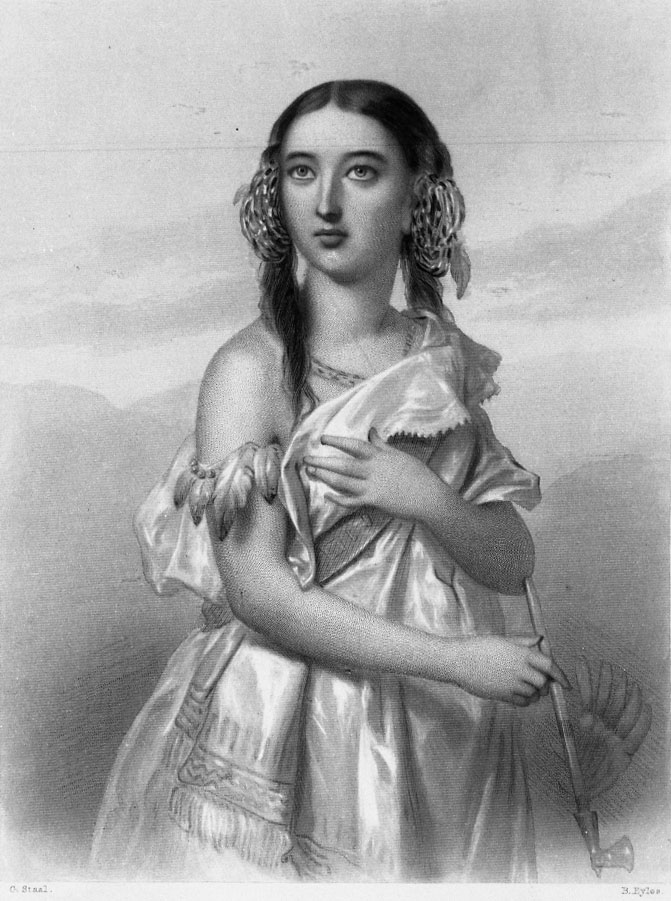

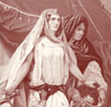




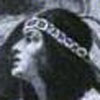
![Poccahontas [sic] Interceding for Captain Smith. From Fifty Famous Women. Poccahontas [sic] Interceding for Captain Smith. From Fifty Famous Women.](thumbs/no498.Pocahontasinterceding.jpg)
![Poccahontas [sic]. From Fifty Famous Women. Poccahontas [sic]. From Fifty Famous Women.](thumbs/no497.Pocahontas.jpg)
